Most endurance athletes don’t really pay much attention to their sweat loss when they exercise.
But contrary to what most people think, the amount of sweat that you lose, is crucial to your performance; in fact, the amount of sodium loss can vary up to 15 times between different individuals. So this means that a one-size-fits-all approach does not work, when it comes to hydration needs.
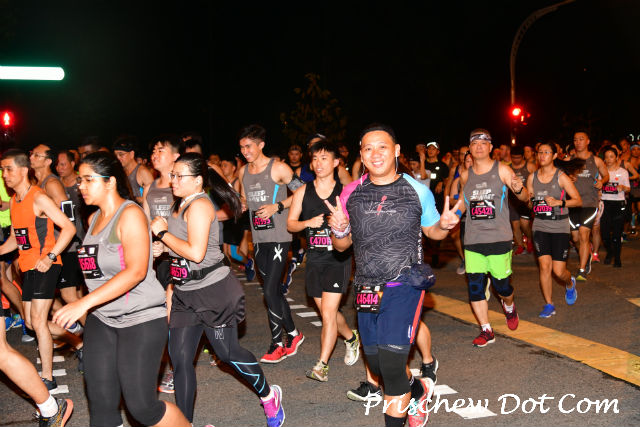
Athletes rarely think about their hydration needs when they race.
That is when athletes need a personalised hydration plan and products to meet their individual hydration needs via a Sweat Test – which is now being offered in Singapore in a partnership between Coached and Precision Hydration.
Founded by Ben Pulham, Coached is a personalised heart rate training programme for marathoners and triathletes that allows you to track, optimise and enjoy your training.
The UK-based Precision Hydration on the other hand, are the leaders in hydration and sweat testing for athletes all over the world.
And the sweat test is a new service that Coached has recently begun to offer, at a rate of S$229 per test.

Ben Pulham from Coached.
Said Ben, 37, “There are two reasons why I am interested in the sweat test. Firstly to help people limit their frequency of cramping. If I can help people to stay in a better hydrated state, their body is under less stress and they can produce more at training and their heart rate will thus be more consistent. So their performance will go up as well.”
He added “And if you have not done a sweat test, you may be taking products such as the SaltSticks but you do not know for sure how much sodium you are losing when you sweat. You are only guessing. Sodium loss can vary from 200 to 300ml per litre of sweat, to more than 2,300ml. This test measures your sodium concentration of sweat; your sweat rate is how much you sweat.”
After doing a sweat test, you will know for sure how much sodium you are losing and can thus use supplements to replace your sodium intake.
Said Ben, “Precision Hydration makes salt supplements from 250mg to 1,500mg of sodium, and they will customise a training plan based on how much salt you are losing.”
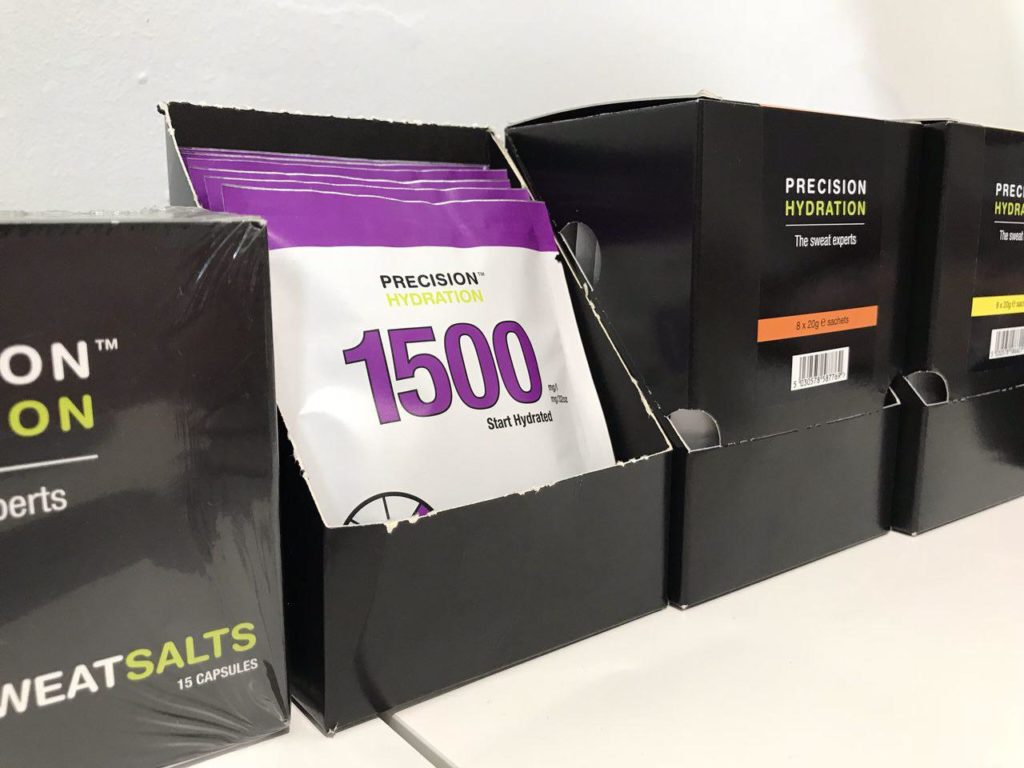
Salt tablets from Precision Hydration.
He added, “Though there are a number of factors that causes cramping during long races such as marathons and Ironman triathlons, a lack of sodium is a key factor. With the hot climate that we have here in Singapore, we sweat so much and we lose much more sodium than people in say, New Zealand, where I grew up. So if I can help athletes customise their hydration needs to reduce cramping, it may limit, but will not completely stop them getting cramp as there are other reasons too, that lead to cramp.”
Other factors that lead to cramping also include a lack of conditioning and training, as well as poor race execution strategies, for example, starting a race way too fast than you should.
This is why Ben had been who eager to bring the sweat test to the repository of tests that are being offered by Coached, which also include a lactate test, a VO2 max test and a fat burn test.
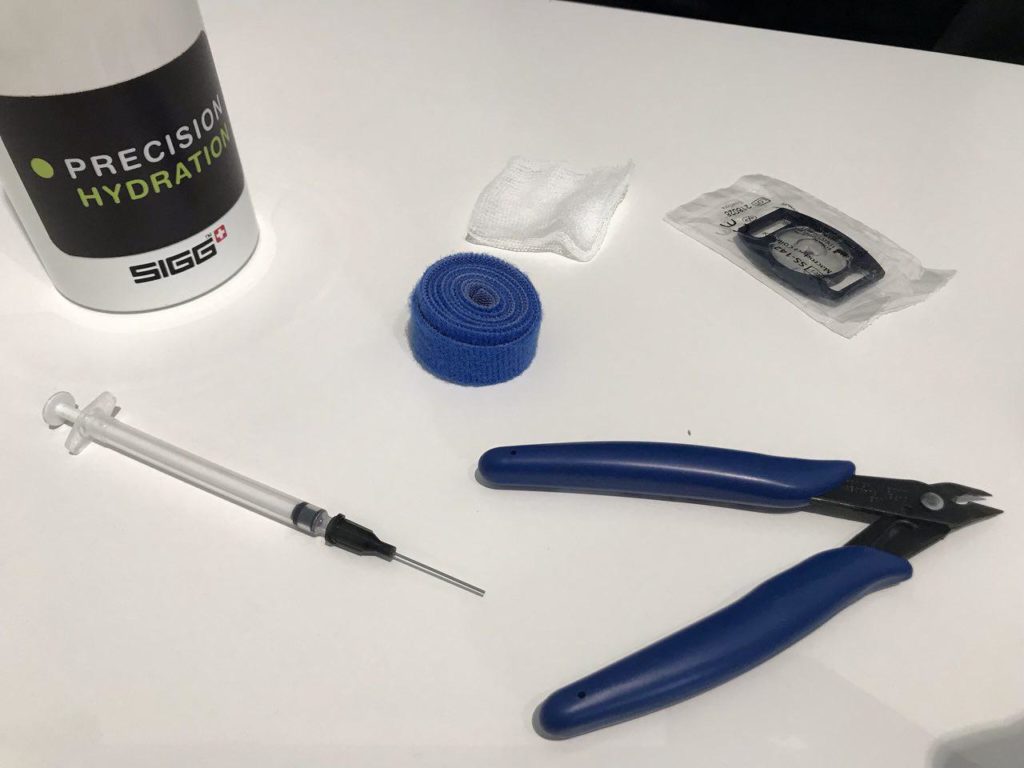
I was nervous at first when I saw that needle and the pliers…
Said Ben, “In fact I have spent the past year trying to figure out if we can get the analyser that Precision Hydration uses to measure sodium.”
The sweat test itself though, is a deceptively simple procedure, and takes place in Ben’s lab at Tanjong Pagar.
Said Ben, “The nice thing about this is that it is such a simple test. The one thing that I like about it, is that it is a static test. The technology was created for cystic fibrosis and Precision Hydration got the right to use it for sport. It is fast and not invasive and the information gleaned from it is really useful, too.”
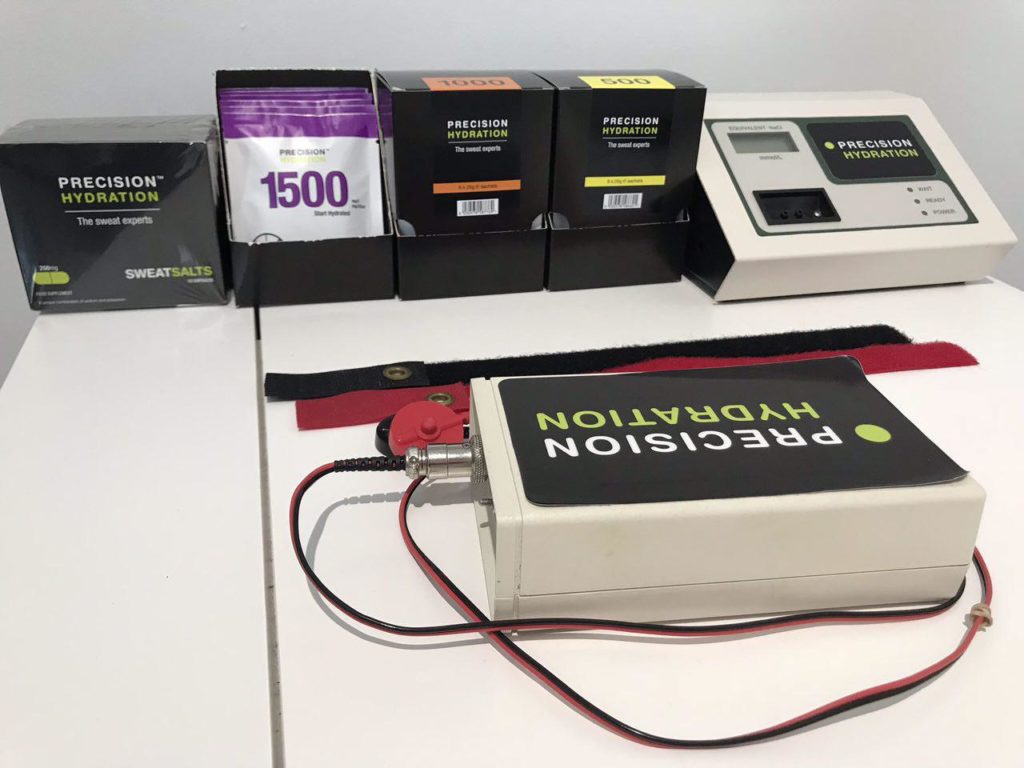
Sweat Test equipment lying on the table.
I underwent the sweat test myself and basically, all you need to do for the test is to sit down comfortably in an air conditioned room. And unlike what the name suggests, you do not need to work up a sweat at all.
Explained Ben on the testing procedure, “We put two little nodes on your forearm and they send the current through your arm that causes you to sweat. Then we push it through an analyser that gives you the mm of sodium per litre of sweat that you are losing and then recommends which Precision Hydration products to minimise your salt losses, so that you can remain in an optimal hydrated state.”
For the average person, the sweat test can take about 45 minutes in all.
When I had stepped into the testing room, Ben asked me to place my right arm on the table, and then he wiped it with an alcohol swab. Two nodes were then placed onto my arm for about 15 minutes or so.
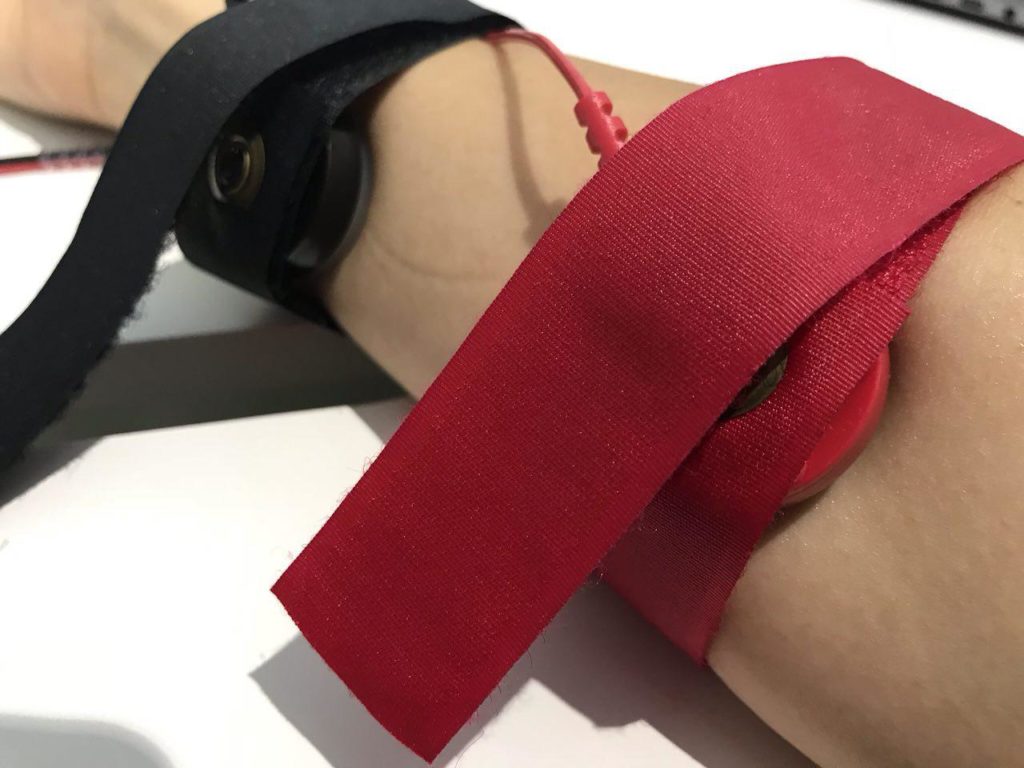
The two nodes are red and black colour.
Ben told me that this was supposed to feel somewhat ticklish, like an ant bite, but when the nodes were on my arm, I didn’t feel anything though.
When the nodes were removed too, I didn’t actually see any sweat on my arm, even though it was supposed to be there.
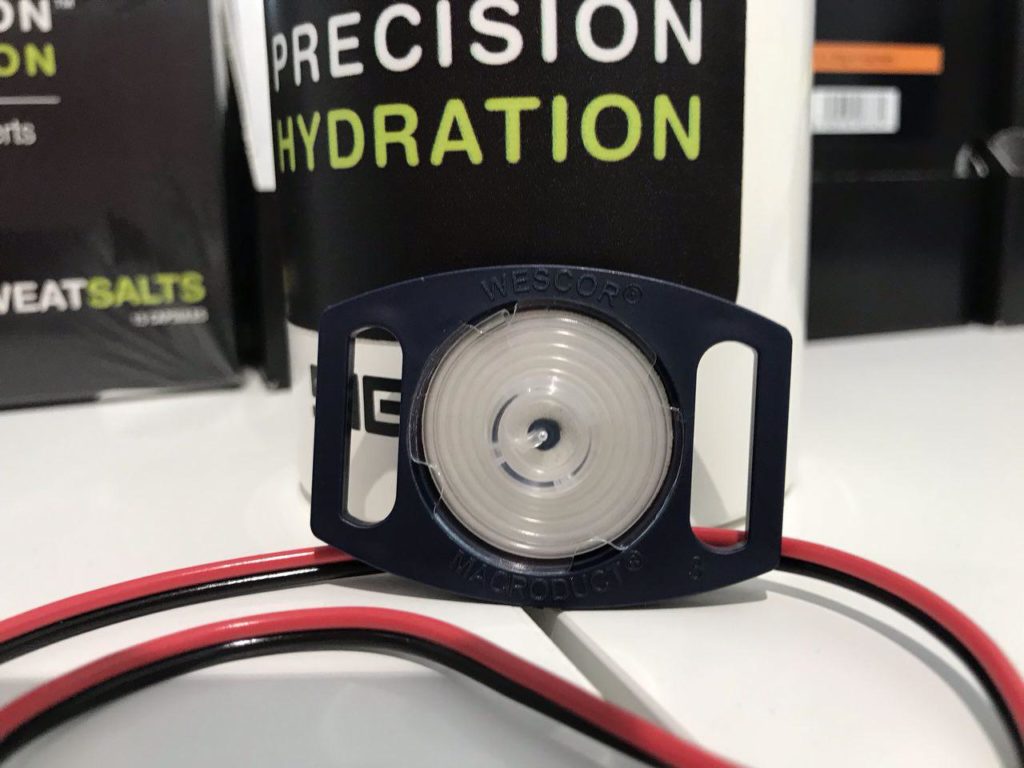
This is the rolled-up tube that was used to collect the sweat.
The second part of the test was basically to collect the sweat. To do this, a small tube is placed on the arm and the sweat can be seen when the tube changes from transparent to blue colour. This took somewhat longer than expected in my case, as the sweat was apparently not being picked up.
I thought this was quite strange, because I usually sweat a lot, even when I am not working out. For example, when I head outside for a quick five minutes to buy lunch, I am already sweating.
According to Ben, the amount of time taken for the sweat to be picked up in the tube depends on a few factors, for example, if the person is dehydrated prior to the testing.
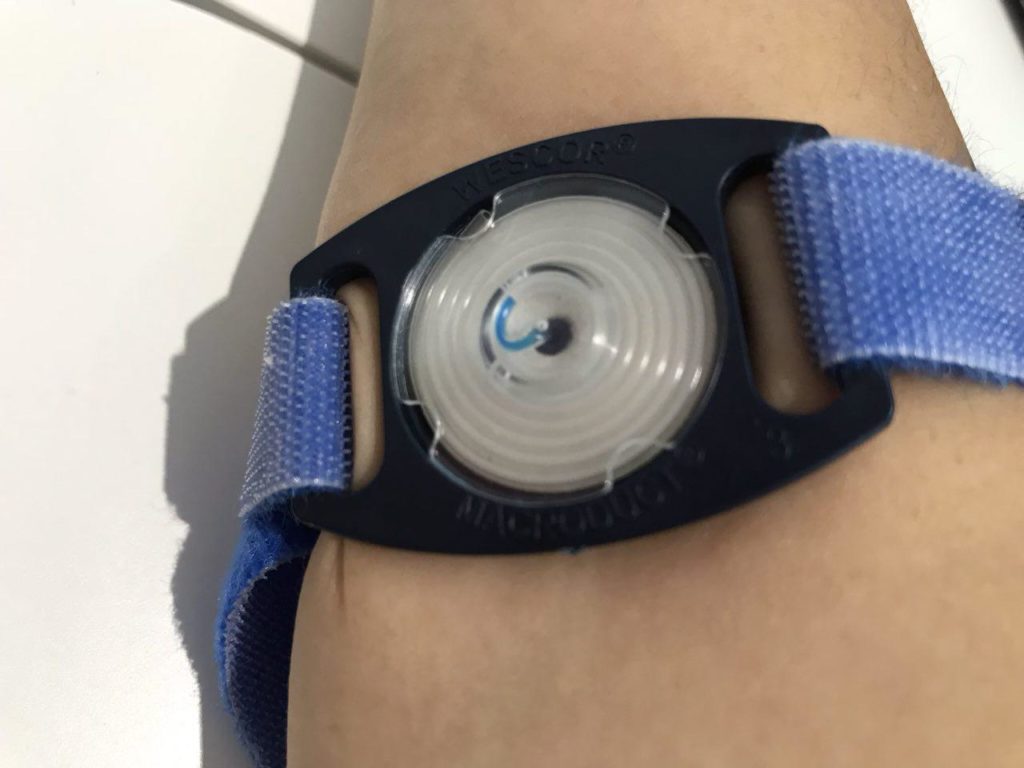
The blue colour slowly fills the tube on my arm.
Said Ben, “As most people do not spend time thinking about hydration at all, so as a result, we are in a constant state of dehydration and this impacts our ability to train and recover. It also affects your energy level and how well you race. If you are serious about training, your day-to-day hydration strategy is such a simple thing to fix. Everyone is talking about doing more training and improving the quality of their training but there are other things like proper hydration, that can result in you improving as an athlete.”
He added, “Generally though, your amount of hydration depends on how active you are, how much salt you lose, and whether you spend most of the day indoors or outside. Leading into races, there are lots of advice telling people to hydrate, but if you hydrate with plain water and not a drink high in sodium, you are diluting the sodium in your blood and that is not ideal.”
I thought I was not particularly dehydrated on the day of the test, as I’d drunk somewhere between two to three 500ml bottles of water spread out throughout the morning and at lunch time before the afternoon testing appointment.
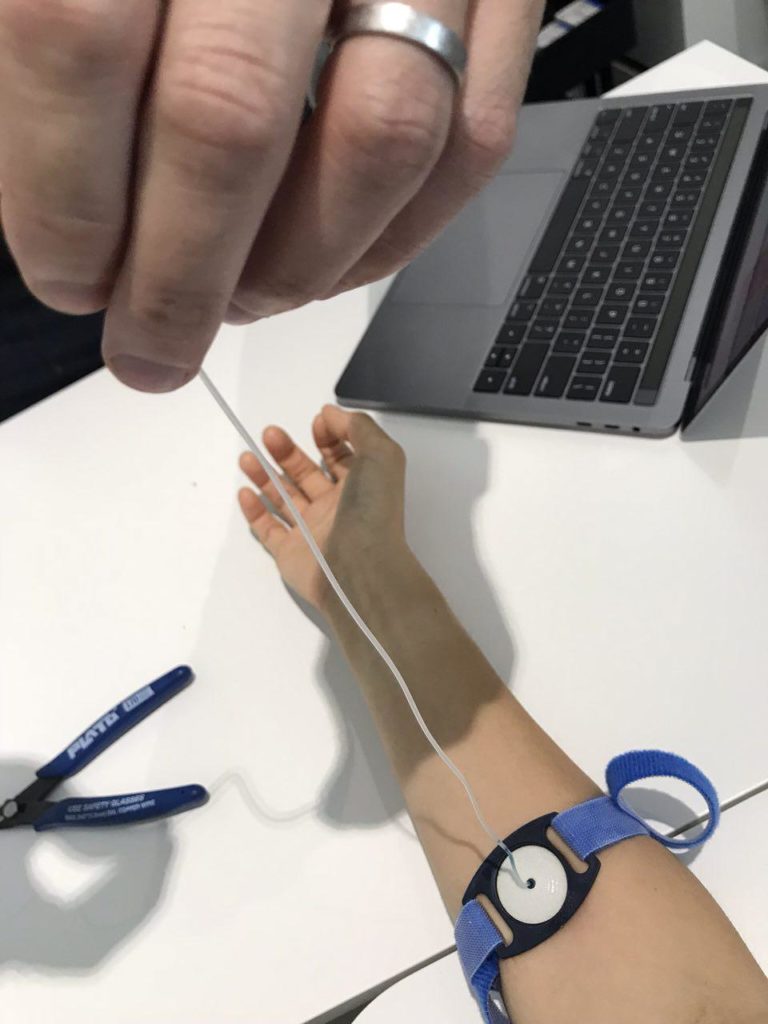
Pulling out the tube to cut it before feeding it into the machine for analysis.
Eventually though, enough sweat was picked up to cut the tube and then this was put through the analyser. My result was that I have a moderate to high sweat level – I lose 962mg of sodium per litre of sweat.
Said Ben, “This means that you have to replace salt at a higher rate; I think that most people are taking in far less salt than they need and under-replacing their sodium levels. This leads to increase in cramps and a decreased chance of performance.”
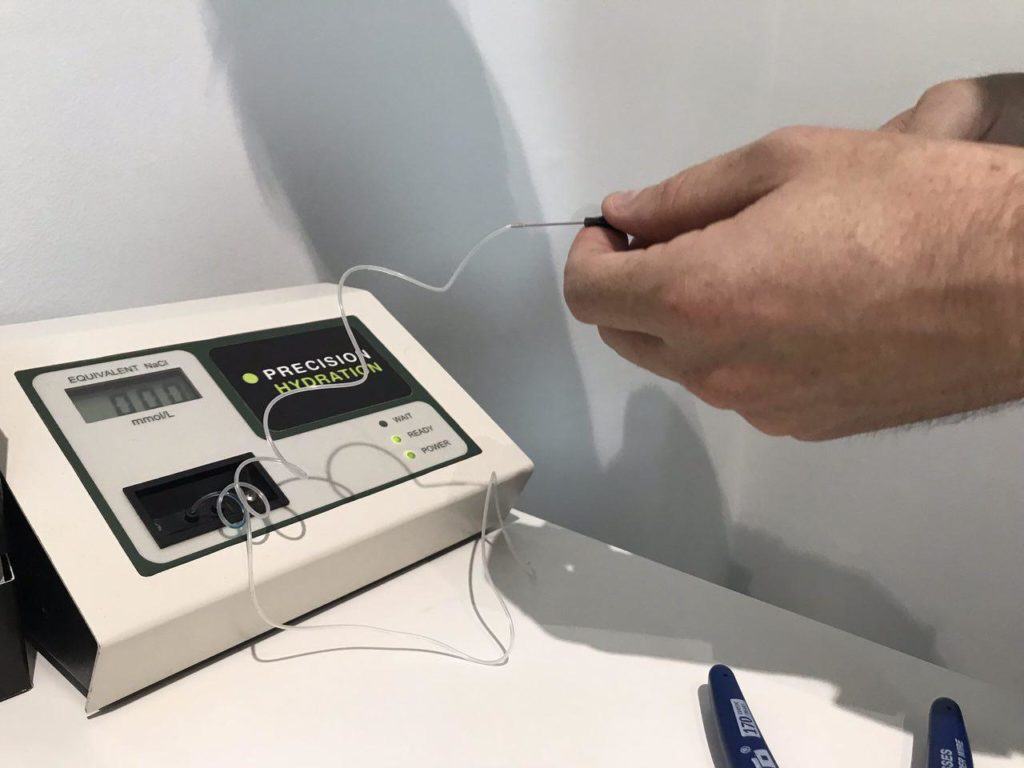
Inserting the tube into the machine to measure the saltiness of my sweat.
For my salt intake strategy, this means that I need to take a strong salt drink of about PH1,500 mixed in 500ml of water, about an hour before I start running or prior to a race. This would be Precision Hydration’s strongest electrolyte drink available.
But if I am running early in the morning though, then Ben advises that I consume the PH1500 drink at night before I go to bed, because doing so immediately before exercise may lead to stomach cramps.
This is because the digestive system is trying to work too hard to digest the large amount of salt but at the same time, you are stressing out the body with intense exercise, according to Ben.
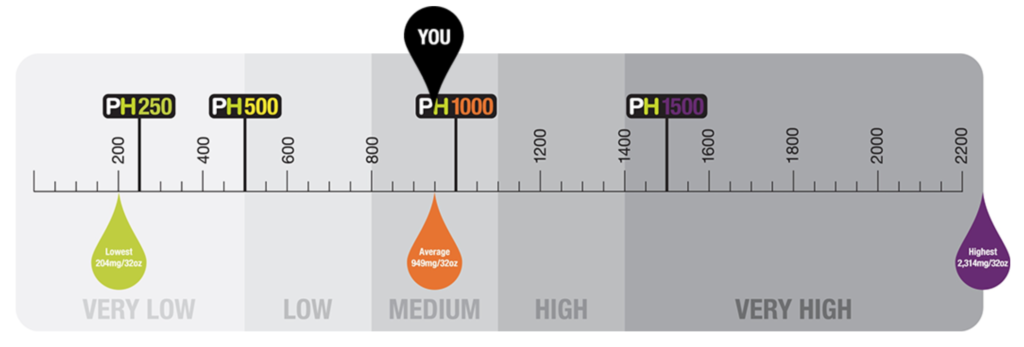
As you can see, I fall in the higher end of the moderate range of salt loss in my sweat.
In fact, I must say that this is what I had already experienced on one occasion, when I took a PH1,500 salt and electrolyte drink and began running about 10 minutes after that. But when I tried again, and took the PH1,500 salt drink roughly an hour before my run, then I felt fine.
But during exercise that lasts for four hours or longer though, I need to take PH1,000 of salt in my bottle or hydration pack, as my fluid and electrolyte requirements appear to be higher than that of the average person.
Based on what I have been consuming with the SaltSticks, this means that I have not been taking in enough sodium; so it looks as though I may have to increase my dosage of the SaltSticks in order to get enough salt into my system. Perhaps this is no wonder I had cramped in the latter stages of the recent Sundown Marathon, then!

Who else succumbed to cramps during the recent Sundown Marathon?
I am not the only athlete who feels that getting a sweat test is useful to find out my hydration needs to eliminate cramp.
In fact when I was leaving the Coached Lab after my test was completed, another member, Matthew Sum Yoong Lee, was also coming in to get a sweat test done as well. He hopes that the sweat test and finding out his exact hydration needs can improve his marathon performances.
Said Matthew, 37, “I found out about this sweat test through Ben and I am here to find out how I can perform better in my full marathon. I always get cramps around the 30km mark but surprisingly, I never cramp for half marathon. So I hope that the Precision Hydration products can offer me something.”
He added “For example, the last time I ran full marathon, I cramped badly seven times and my finish time was half an hour slower than it could have been. With a sweat test, I will know for sure whether it is a muscular problem or a sodium problem that I have been having.”
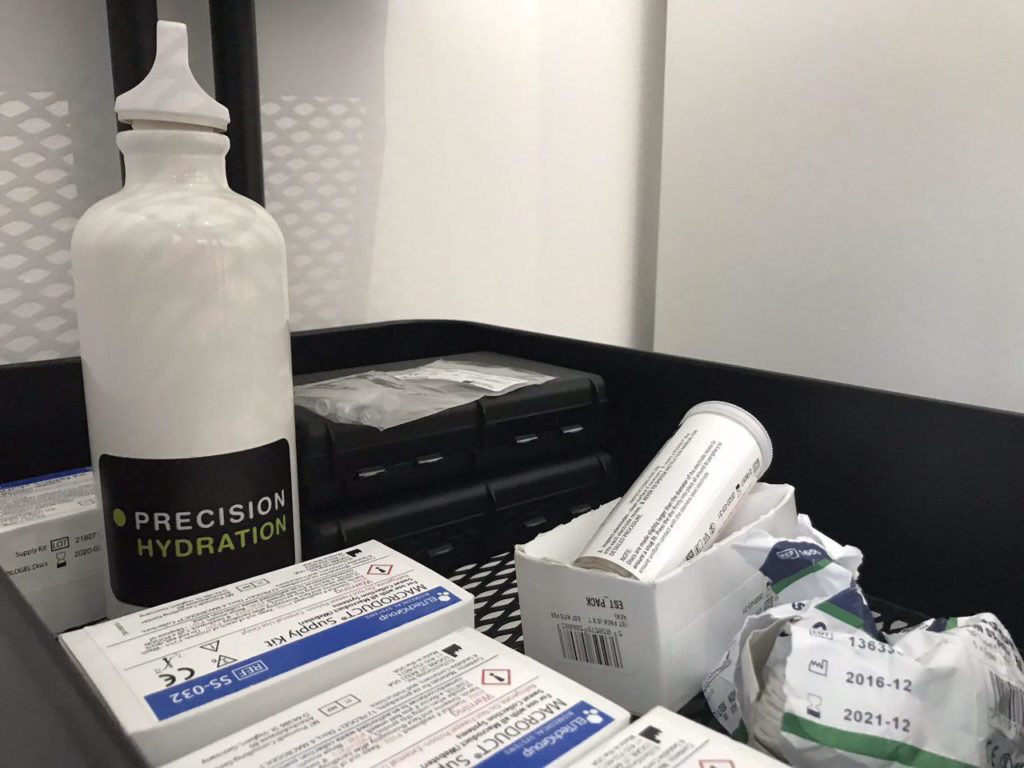
More equipment for the sweat test.
My test result is certainly not the highest that Ben has seen in the Coached lab though. So far, Coached has done about 40 sweat tests and the majority of people fall between about 600mg to 1,200mg of sodium loss per litre of sweat.
Said Ben, “So far I have seen no real surprise in the lab, but interestingly, people are different to what they think they are. In fact, I fall into that category too.”
For Ben himself, his sodium needs are on the high end of the scale. So he admitted that this means that he needs to be very careful with his sodium intake and not under-do it, if he wants to race well.
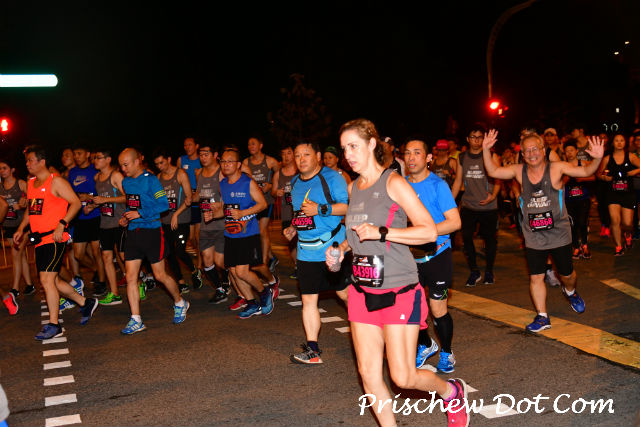
Now I know my hydration needs for my next marathon.
And now that I know the exact salt needs of my body, I hope to be able to adjust my hydration needs accordingly and incorporate these test results into my next marathon training cycle for the Berlin Marathon in Germany in September – with the aim of running a new personal best and at the same time, eliminating cramps completely during that race.
To book a sweat test appointment with Coached, contact Ben Pulham at hello@coached.fitness.

The sweat test, even if carried out by an experienced technician, sometimes lacks reproducibility owing presumably to physiological variations (patient’s diet, temperature, and other factors at present unrecognized). Some patients are particularly prone to exhibit this variability and in them a single sweat test is almost valueless.
Source : https://www.ncbi.nlm.nih.gov/pmc/articles/PMC1544818/
Hi Sir, understand that there will be a special promotion on 18 Aug 18 (Sat) for this precision sweat test and with limited slots. May I know how do I register to get a slot for this test?? Looking at the earliest slot available.
Hi. I think you can RSVP for that here. https://www.facebook.com/events/444365369388585/